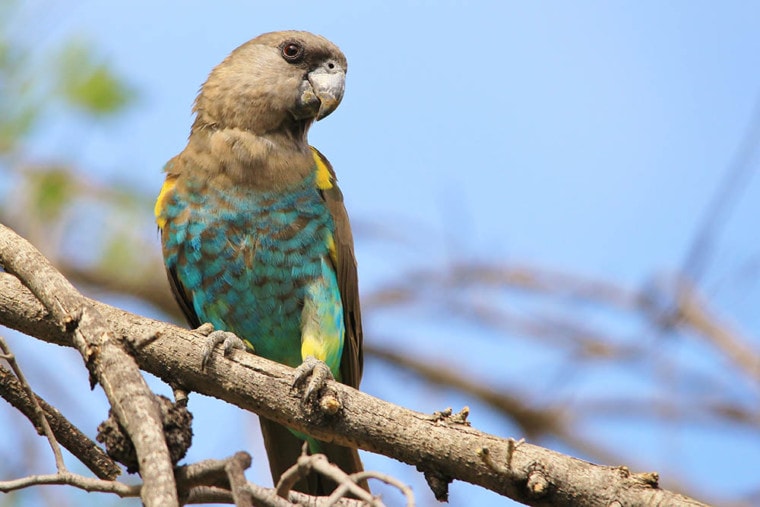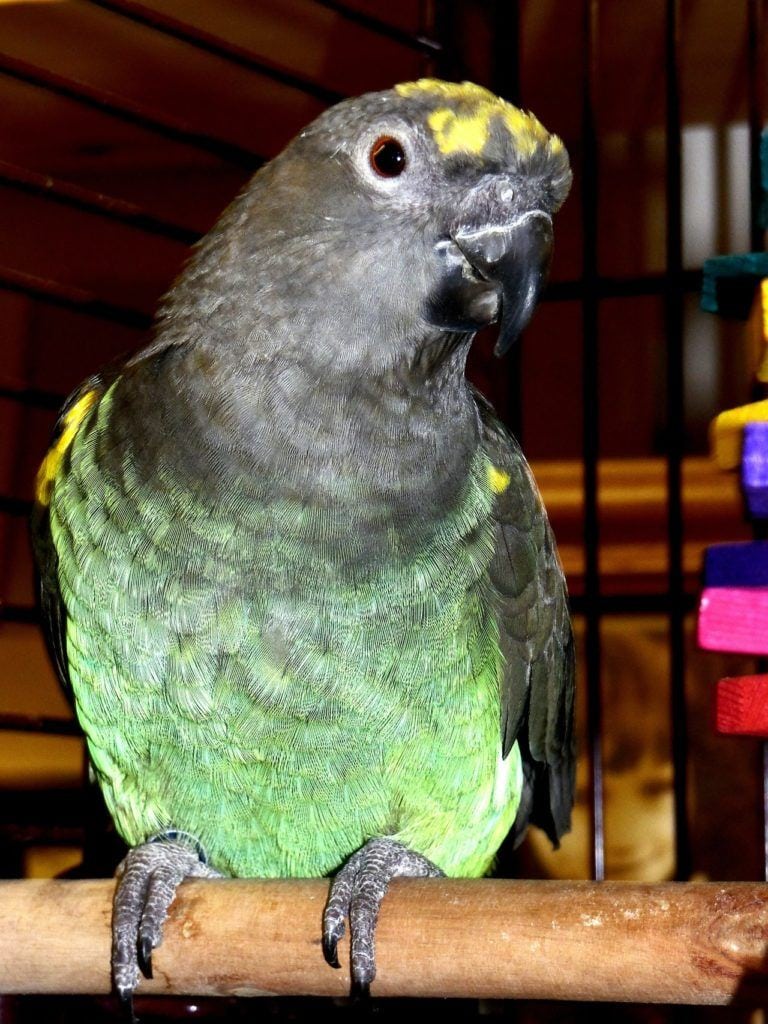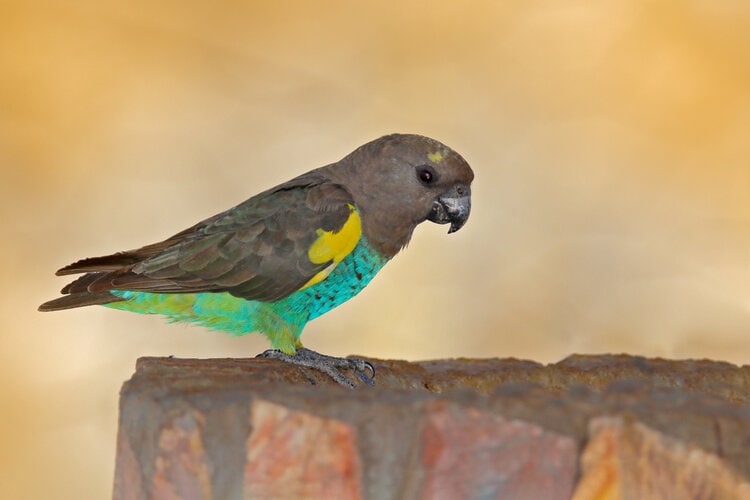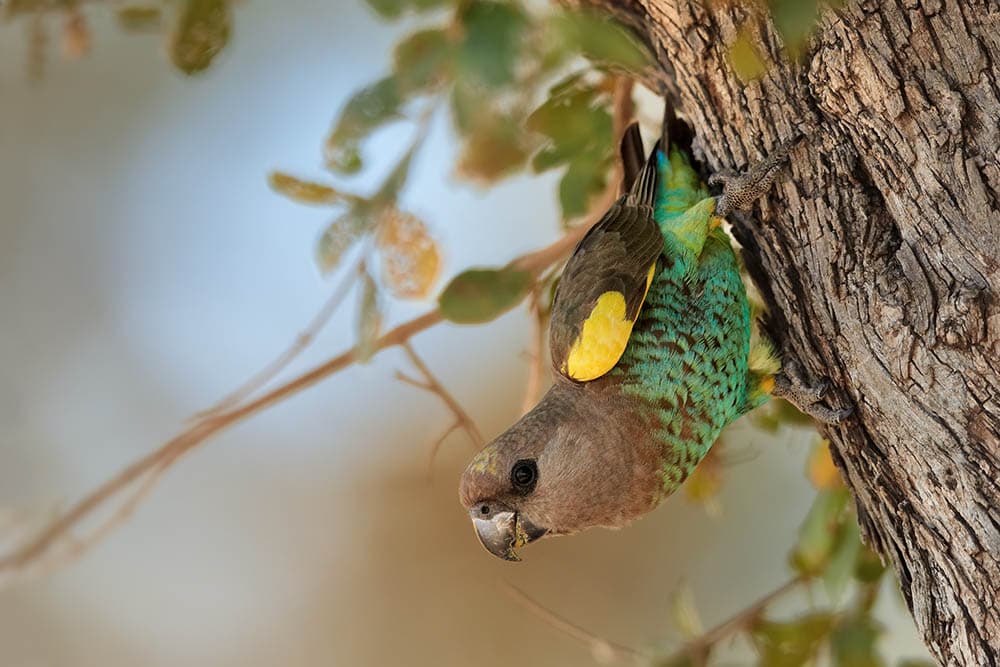
A Meyer’s parrot is a rare sight in the pet world. Of all the parrots that originate from Africa, these are the smallest. Their personalities are also more moderate compared to some of their relatives, but they’re still excellent birds to keep as pets. There is a lot to appreciate about these parrots. Though you might have a hard time getting your hands on one, you’ll likely be more determined after you learn a little more about them.
Species Overview
| Common Names: | Meyer’s Parrot, Brown Parrot, Sudan Brown Parrot |
| Scientific Name: | Poicephalus meyeri |
| Adult Size: | 8–9 inches |
| Life Expectancy: | 20-30 years |
Origin and History
The Meyer’s parrot is a type of Poicephalus parrot species. These birds are usually medium in size with a stocky build like other African parrots, but this specific type is the smallest of them all. They get their name from a German ornithologist named Benhard Meyer.
Wild Meyer’s parrots are naturally found in the warm climates of Africa. Here, they make their nests on plants and bushes that are found in nature. Keeping their nests close to the ground helps with mating. They travel in either pairs or small flocks, and the largest populations have been spotted in Botswana.

Temperament
One of the most cherished characteristics of these parrots is their more docile, quiet personalities. This calm nature is what draws apartment renters and those in small houses and congested neighborhoods to them.
Meyer’s parrots may not be the biggest talkers, but they still mimic a few words, noises, and music. A lot of the sound you hear from them is screeching, which gets loud if they’re scared. Make sure they’re in a safe and comfortable space, and you won’t have as big of an issue.
Because Meyer’s parrots live for up to 30 years, they are a lifelong commitment. Don’t buy this bird without doing your research and confirming that you are able to dedicate the time to them that they demand.
Speech & Vocalizations
Meyer’s parrots are ideal for those who live in or are closer to cities because they are the less chatty of African birds. They are primarily calm in temperament, and the most noise you get out of them is the occasional chirps and high-pitched screeches. They sometimes repeat words that they hear consistently, but complex sentences are rare. You’ll also find that they mimic sounds that they hear around the house, like alarms and ringtones.
Meyer’s Parrot Colors and Markings
These little birds might not be the most colorful parrots in the world, but they still have beautiful earthy tones. Meyer’s parrots have a greenish turquoise body with a black or brown neck and head. The wings and tail are also brown or black, and they have a touch of yellow on their wings and the top of the head. Both males and females are colored very similarly to one another.
Caring for the Meyer’s Parrot
Although Meyer’s Parrots aren’t the easiest to care for, you don’t have to be an expert to have them as a pet. Beginner-level bird owners won’t do the best with them either. It is ideal to have at least a little bit of experience working with parrots before you commit to one.
Cage Setup and Size
Meyer’s parrots are known to shriek whenever they are scared or startled. Place their cage in a quiet area where they can feel secure and comfortable. These birds require bar spacing that is ¾ inches or ⅝ inches, and the entire cage should be at least 24 inches tall and wide.
These parrots love their toys and are happy to entertain themselves if they have a variety to choose from, like swings and chew toys. They also enjoy climbing, so make sure to put a few horizontal cage bars inside.

Common Health Problems
As with all animals, you should take Meyer’s parrots to the vet for regular checkups, especially when they aren’t living in their native habitats. These birds specifically are prone to several issues. One of the most common is Aspergillosis, a fungal infection that leads to respiratory disease affecting the nose, sinuses, trachea, eyes, lungs, and air sacs. Avoid Aspergillosis by cleaning your house and their cage regularly.
Other common issues with parrots that live in captivity are feather mites, liver disease, pneumonia, and certain viral infections. If you notice any changes in your pet bird’s behavior, make sure to take them to the vet right away to rule out any illness.
Diet and Nutrition
Many bird owners give their birds seed mixes as their main source of nutrition. Instead of relying on this, use seeds as a treat and give them high-quality, pelleted bird foods. These pellets are more likely to provide them with a well-balanced diet than strictly seeds. You can also supplement their diet by rotating treats such as fresh fruit, veggies, and the occasional piece of bread or sugar-free cereal.

Exercise
Meyer’s birds won’t hesitate to destroy their toys if they don’t have enough stimulation. Make sure to take them out of their cages, which is good for both their physical and mental health. Let them spread their wings a bit every day and keep their minds working with new toys.
Where to Adopt or Buy a Meyer’s Parrot
Your best chance at buying a Meyer’s Parrot is from an exotic bird shop or from a reputable breeder online or in your state. Make sure that you aren’t buying or adopting one from just anybody. You want a bird that was bred properly so that you don’t have tons of health issues in the future.
Conclusion
Meyer’s parrots are a beautiful species. They are a little harder to get your hands on, but their small size and laidback temperament are putting them in high demand. These parrots are great for those without tons of bird experience. However, it still helps if you’ve worked with parrots before. Pet birds are a lifetime commitment, and if you take care of them, they will reward you back in ways you never imagined.
Featured Image Credit: Stacey Ann Alberts, Shutterstock









